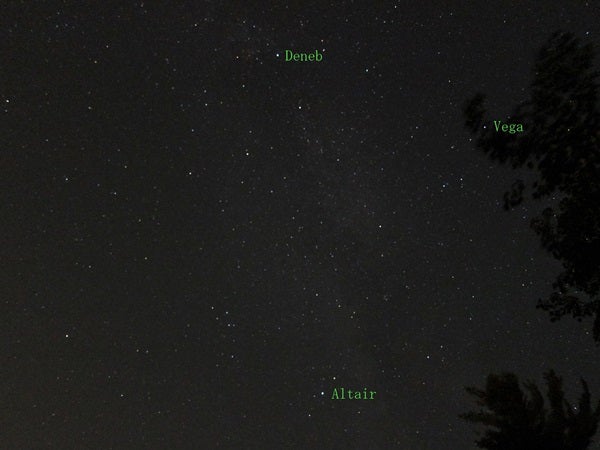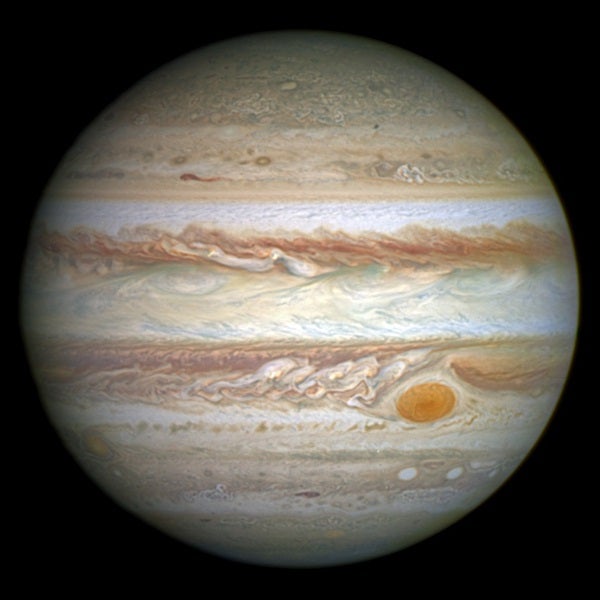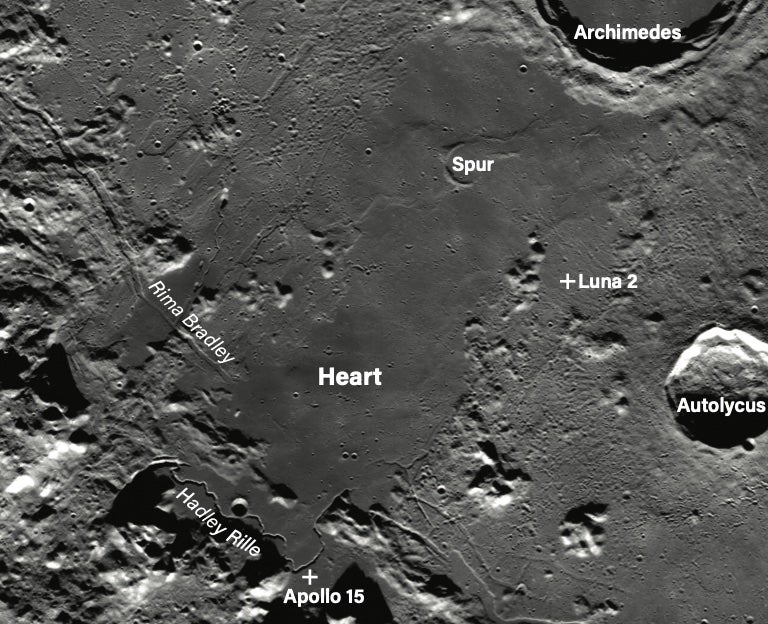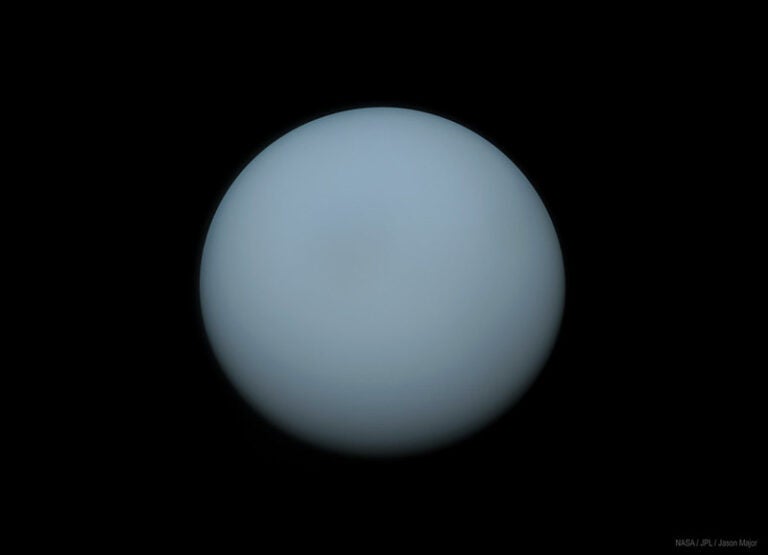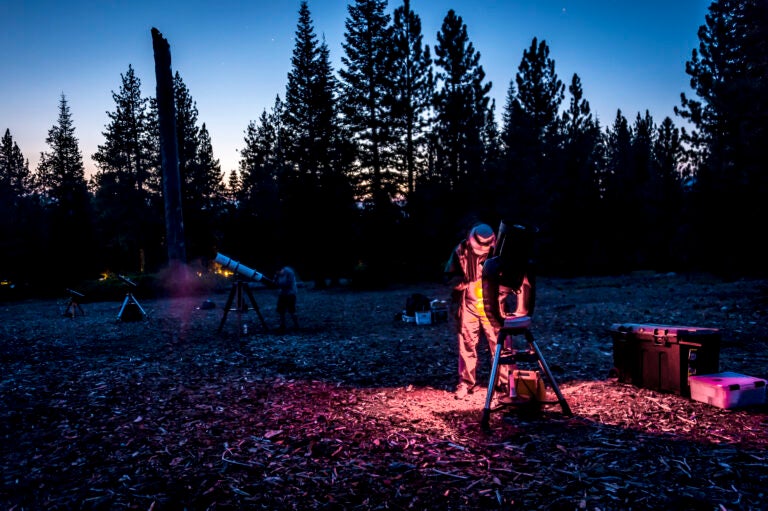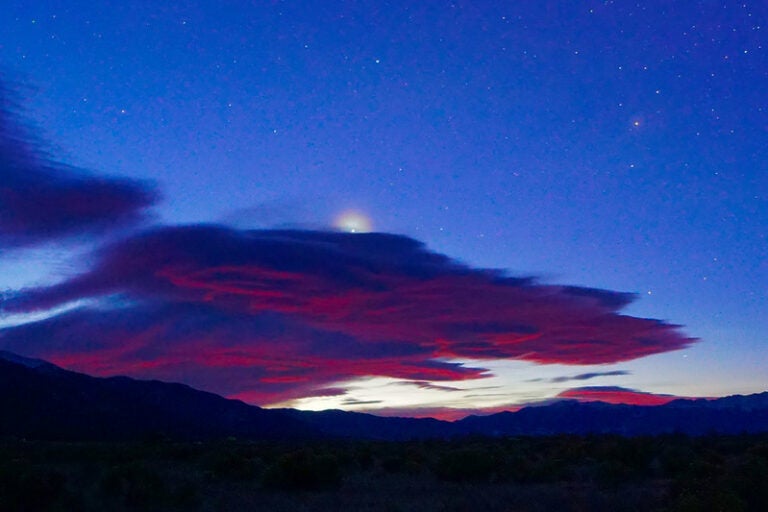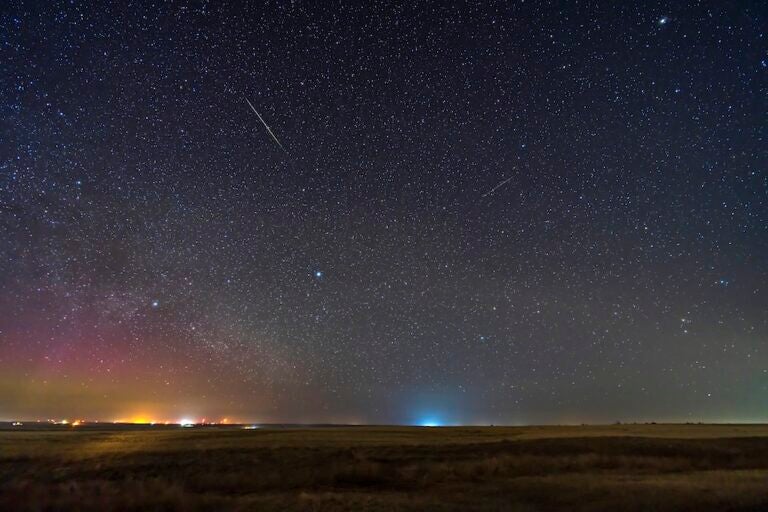Friday, October 21
The night sky’s most conspicuous harbinger of winter now rises in the east around 11 p.m. local daylight time. The constellation Orion the Hunter appears on its side as it rises, with ruddy Betelgeuse to the left of the three-star belt and blue-white Rigel to the belt’s right. As Orion climbs higher before dawn, the figure rotates so that Betelgeuse lies at the upper left and Rigel at the lower right of the constellation pattern.
Saturday, October 22
Last Quarter Moon occurs at 3:14 p.m. EDT. By the time it rises shortly after midnight local daylight time in North America, its phase will have waned to approximately 45 percent lit. Earth’s satellite appears against the background stars of Cancer the Crab, approximately 4° south-southwest of the Beehive star cluster (M44).
Sunday, October 23
Although the Orionid meteor shower peaked two mornings ago, the shower remains active until November 7. And with the Moon waning to a crescent now, our satellite won’t interfere as much as it did at the peak. Observers can expect to see a few “shooting stars” each hour before morning twilight commences. To differentiate an Orionid from a sporadic, remember that a shower meteor will appear to radiate from the northern part of the constellation Orion the Hunter.
Although the calendar says October, the Summer Triangle of bright stars remains prominent in the early evening sky. Look overhead after darkness falls and you’ll spot Deneb, a conspicuous point of light despite being the faintest of the three luminaries. Brightest Vega lies west of Deneb and intermediate Altair appears to their south.
Tuesday, October 25
Brilliant Venus stands out low in the southwest during evening twilight. The planet lies about 10° above the horizon a half-hour after sunset and sets as twilight comes to a close. At magnitude –4.0, Venus is the brightest object in the evening sky. Although the inner world crossed from Scorpius into Ophiuchus yesterday, this evening it appears 3° due north of the Scorpion’s brightest star, 1st-magnitude Antares. If you point a telescope at Venus, you’ll see that its 14″-diameter disk appears about 80 percent illuminated.
Wednesday, October 26
Uranus reached opposition and peak visibility less than two weeks ago, and it remains a tempting target all this week. The outer planet appears in the southeastern sky during midevening and climbs highest in the south around midnight local daylight time. The magnitude 5.7 world lies in southern Pisces some 2.8° northwest of magnitude 4.8 Mu (m) Piscium. Although Uranus shines brightly enough to glimpse with the naked eye under a dark sky, binoculars make the task much easier. A telescope reveals the planet’s blue-green disk, which spans 3.7″.
Thursday, October 27
Observers who have yet to get their fill of Pluto this year have a great opportunity to track down the distant dwarf planet tonight. The diminutive world lies in northeastern Sagittarius some 0.3° north and a touch west of magnitude 3.8 Omicron (o) Sagittarii. What makes tonight special, however, is that Pluto passes 4′ due north of a 7th-magnitude field star. You’ll need an 8-inch or larger telescope and a dark sky to track down the magnitude 14.2 planet. Plan to hunt for Pluto when it’s highest as soon as the sky grows dark.
Mercury passes behind the Sun from Earth’s perspective at noon EDT. This means the innermost planet lies on the opposite side of the Sun from Earth and remains hidden in our star’s glare. It will return to view in the evening sky late next month.
Although Jupiter passed on the far side of the Sun just a month ago (on September 26), it has already returned to prominence before dawn. And this morning it has a spectacular conjunction with the waning crescent Moon. The two lie just 1.4° apart as they rise more than two hours before the Sun and appear 10° high in the east an hour before sunup. The Moon appears 4 percent lit while Jupiter shines brilliantly at magnitude –1.7.
Saturday, October 29
Mars continues to put on a nice show these October evenings. The magnitude 0.4 Red Planet lies among the background stars of Sagittarius and appears nearly 25° high in the south-southwest after darkness falls. A telescope shows the planet’s 8″-diameter disk, which may show a few subtle dark markings during moments of good seeing. At 9 a.m. EDT today, the planet reaches perihelion — its closest approach to the Sun during its 1.88-year orbit — when it lies 128.4 million miles from our star.
Sunday, October 30
Fresh off its conjunction with Antares on Tuesday, Venus passes 3° south of Saturn today. The pair stands nearly 15° high in the southwest 30 minutes after sunset and doesn’t set until 8 p.m. local daylight time. These next few weeks will be your final chances this year to get decent evening views of Saturn through your telescope. The gas giant planet shows a 15″-diameter disk surrounded by a dramatic ring system that spans 35″ and tilts 27° to our line of sight.
If you thought Pluto’s close encounter with a 7th-magnitude star on Thursday was special, just wait until this evening. The distant world skims a mere 8″ north of a 9th-magnitude field star. Although binoculars will show you the star, you’ll need an 8-inch or larger scope to spot Pluto, which glows 100 times fainter.
New Moon occurs at 1:38 p.m. EDT. At its New phase, the Moon crosses the sky with the Sun and so remains hidden in our star’s glare.


